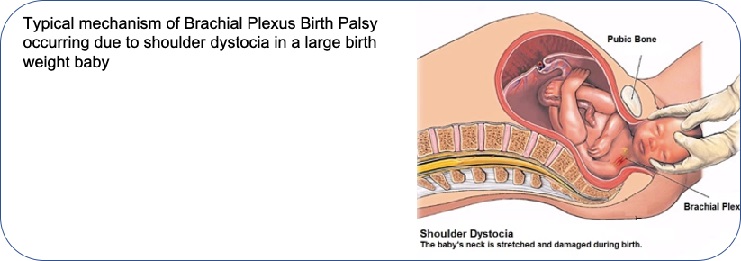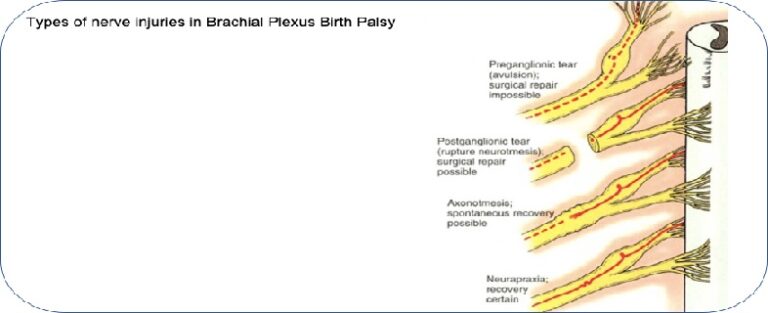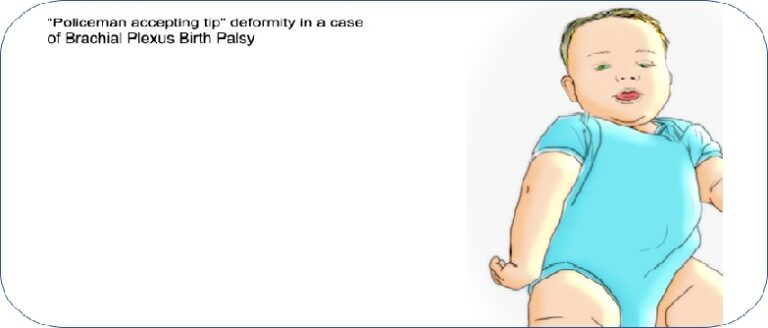Best Doctors for Brachial Plexus Surgery Treatment in Thane, Mumbai
The brachial plexus is a bunch of five nerves originating from the cervical spine in the neck travelling down to the upper limb. The function of nerves is to provide sensation and promote action (motor power). Injury to these nerves can lead to temporary or permanent loss of function in the upper limb partially or completely. These injuries can be missed in case of polytrauma due to vehicular accident as there could be an injury to many parts of the body. Even if they are diagnosed, many times treatment like physiotherapy or medical treatment is advised for some period by many doctors.
We at Pinnacle Ortho Centre provides Most-Trusted Doctors/Surgeons for Brachial Plexus Surgery in Thane West, Mumbai with the latest world-class technology at an affordable price.
How can the brachial plexus be injured?
There are mainly four reasons in which we see such injuries.
1- In cases of a difficult pregnancy, while attempting to deliver the baby, traction force may need to be applied. If the head of the baby is large or passage is narrow then the brachial plexus in the neck can be stretched and at birth, the baby does not show any movement of the upper limb
2- In adults, the brachial plexus gets injured at the time of vehicular accident mainly motorbike. There is usually a collar bone (clavicle) fracture or arm bone (humerus) fracture.
3- Occasionally we have seen open injury in the neck due to piercement of the sharp object causing nerve injury.
4- Sometimes, a tumour or mass in the neck region can compress the brachial plexus and lead to weakness in the upper limb.
Brachial Plexus Birth Palsy (BPBP) is a condition in which the brachial plexus gets damaged during child-birth due to stretching of the child’s neck during passage through the birth canal. It results in paralysis of muscles of the shoulder/ elbow/ wrist/ hand and loss of sensations in the upper limb.

Types of Brachial Plexus Birth Palsy :
Depending on the number of nerve roots damaged, Brachial Plexus Birth Palsy is of following types:
Type 1: C5 and C6 nerve roots damaged. Results in weakness of shoulder and elbow flexion. Wrist and finger movements are intact.
Type 2: C5, C6 and C7 nerve roots damaged. Results in weakness of elbow and wrist extension in addition to the weakness seen in Type 1.
Type 3: All nerve roots from C5 to T1 resulting in flail upper limb.
Type 4: In addition to Type 3, drooping of eyelid (Horner’s syndrome) seen due to damage to surrounding nerves. May also be associated with elevation of hemi-diaphragm and breathing difficulties due to phrenic nerve palsy.
What are the types of nerve injuries?
We usually see three types of injuries.

1- Neuropraxia- It means the nerve is just stretched out at the time of trauma. Such type of nerve injury recovers completely in a few weeks without any surgery.
2- Axonotmesis- It means the nerve is partially cut. So recovery is also seen partially and many times such injury needs surgery.
3- Neurotmesis- It means there is the complete transaction of nerve or nerve is completely cut. Such injuries certainly do not recover by any medical management and need surgery at the earliest for better function of the limb
How can we confirm our diagnosis?
Mainly, an expert in treating brachial plexus injury can get a fair idea about the seriousness of the problem after examining the patient in detail. To confirm our diagnosis, we may have to do a nerve conduction study & electromyography to know at what level the nerve is injured. MRI of the brachial plexus also may need to consider in selected cases.
Clinical features:
Brachial Plexus Birth Palsy occurs more commonly in large babies (> 3kg birth weight) born by vaginal delivery. There may be a history of shoulder dystocia during labour (head of the baby is delivered, but shoulder gets stuck in the birth canal).
Decreased movements of the upper limb are usually noted soon after birth.
In upper plexus palsy, the baby holds the upper limb in the typical “Policeman accepting tip” position with shoulder adducted and internally rotated, elbow extended, forearm pronated and wrist flexed.
In global plexus palsy, the upper limb is flail without any movements.
There may be associated fractures of clavicle or humerus.

1- As the child grows older, the paralysis may recover to a variable extent depending on the severity of injury and treatment.
2- Older children with partial recovery often have shoulder joint problems with deformity of the shoulder joint due to muscle imbalance, difficult in performing overhead abduction, and difficulty in bringing the hand to the mouth for feeding.
3- Additionally, deformities of the elbow and wrist may be seen.
Investigations:

1- X-rays: Plain X-rays done soon after birth may reveal associated fractures of the clavicle and humerus, and, elevation of the hemi-diaphragm.
2- MRI of brachial plexus may be done prior to nerve reconstructive surgery and aids in surgical planning.
3- MRI shoulder done in older children with shoulder joint problems shows shoulder joint deformation.
What are the treatment options?
Fortunately, such injuries though in the beginning gives complete weakness in the upper limb, most of the time, they recover in a natural way in due course of time. But if weakness that has not recovered in 6 weeks after injury certainly needs proper examination by experts.
Supervised physiotherapy with stimulation of weak muscles, medical drug therapy, mirror therapy, a temporary splint can be considered in the initial period in such cases.
After examination & investigations, if the diagnosis is made about rupture or avulsion of nerves then surgery is recommended. Surgery done at the right time has more benefits and helps the patient to gain some function back. For those who have brachial plexus injury more than one-year-old then muscle/ tendon transfers or bony procedures have a role in achieving the lost function.
When do we expect recovery after brachial plexus surgery?
If done in time, in partially injured brachial plexus, the recovery is expected to start in 3 months and may take one & half year after surgery. In patients who have global brachial plexus injury meaning no function in the limb at all, they may need two or three surgery in a span of two years to achieve some function. Recovery after the surgery depends upon the age of the patient, duration since the injury, medical illnesses, addictions & many other factors.
Does the patient need physiotherapy after surgery?
Self-therapy under the supervision of a trained physiotherapist can certainly add value for a speedy recovery.
Please consult Dr Parag B Lad who is an expert Brachial Plexus Surgeon in Thane at Pinnacle Orthocentre, Thane by prior appointment.
